Devlog 1: Modeling the terrain of Orisia
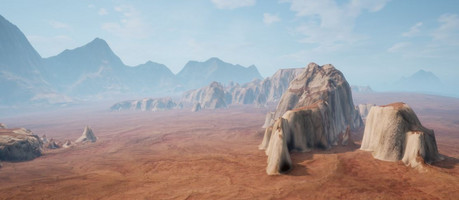
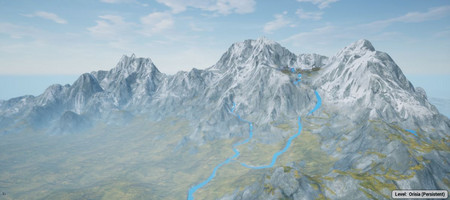

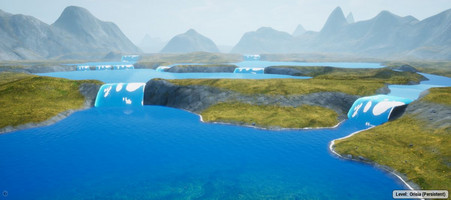
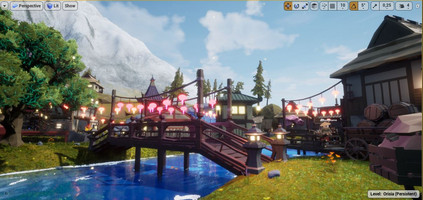
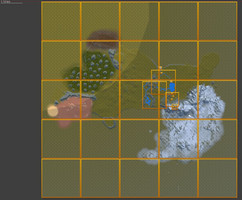
The Covid lockdown hasn’t been easy but it gave us, at least for me, some time. Some time to think and time to work on what we love. I have been able to spend more time working on my game, currently named Osgynn, and I have decided to start a devlog.
I’m not waiting for thousands of readers but I would like to be able to retrace the work I have done on the project and see the improvements and evolution over time.
For this first devlog I’m writing, I’d like to talk about the things I’ve worked on this past month. For all work prior than this, I’ll try to create pre-production articles later.
If I want to make an open world, why not?
For a long time, I thought it would be impossible to create an open world as it required too many work and skills, and yes, this is not an easy thing to create alone. Well, actually, I’ve discovered that it has become pretty easy to create an open world with Unreal Engine and the new tools available to indie game developers, but the main challenge is to make an interesting world.
If we look on Zelda, BOTW, we see that nothing in this large open world is random. Everything is here for a reason, even the deserted large plains with just a few bokoblins or wild animals there and there. The design is the most important thing. It gets harder when we want to create an interesting design and a playable open world. For performance reasons, we also have a lot of challenges in the process.
FlyOverOrisia from Starisen on Vimeo.
Creating the terrain
Anyway, I’ve come across some terrain tools lately and I’ve decided to start working on my terrain again, from the beginning. I’ve always been fascinated by world machine and such softwares but I never took the time to really learn. By trying some more visually appealing tools, I’ve finally learnt the process and I began to create the land of the first continent of the game.
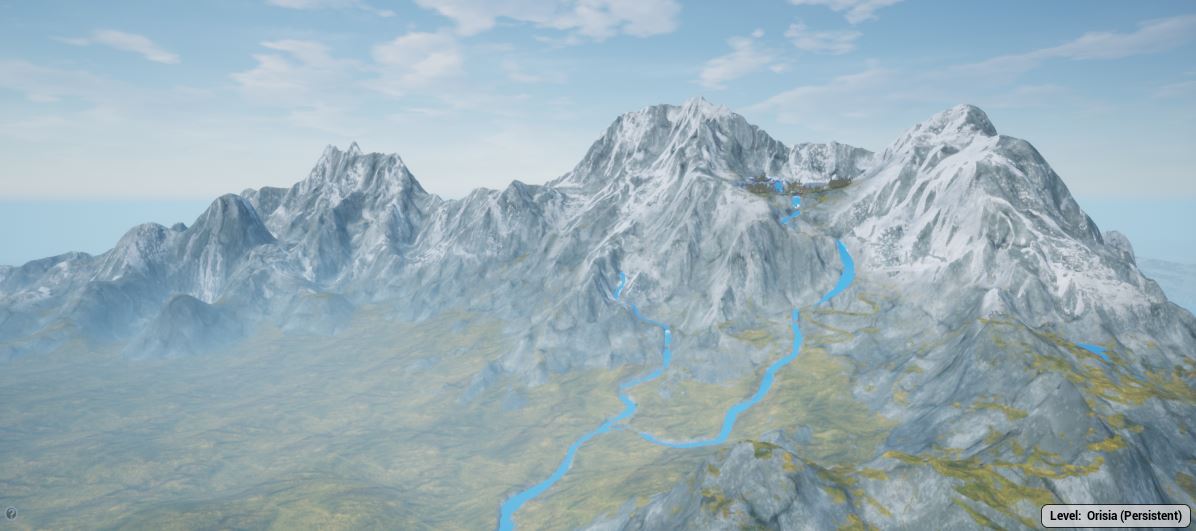
Lhakpa mountains
The first big question was about the size of the terrain. Some games, both old and new have thousands of square kilometers but are almost everytime procedurally generated and lack of something. The world can be logical and nicce but i twill never, or rarely be truely and beautifully composed. I couln’t either make too small world map as I have thousands of ideas, characters and villages to put in it. Of course we can restrict the playable parts of the map as in the Witcher 3, and that is probably how I am gonna do it. I will allow the player to travel on most of the land but some large deserted places will be simplified and smaller.
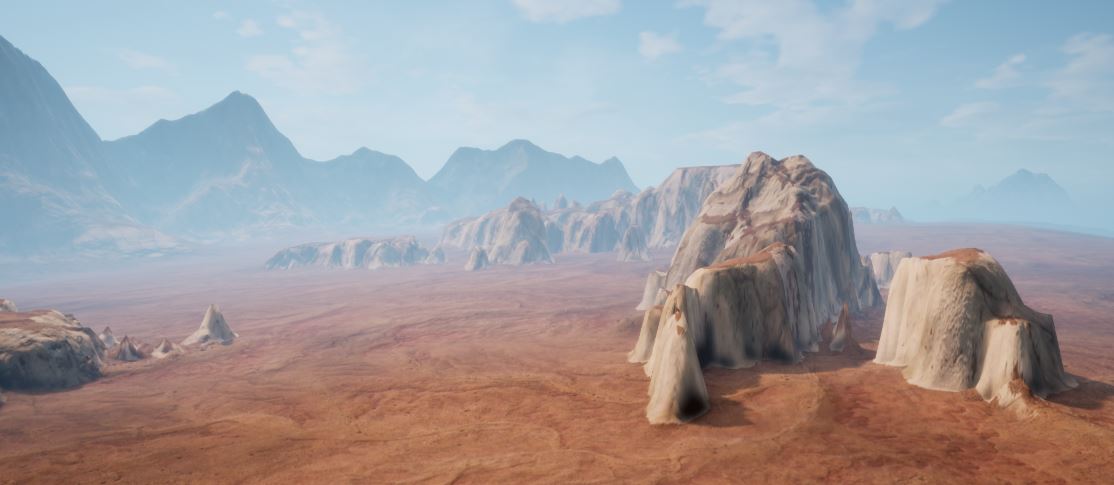
After many tests in Unreal Engine. I’ve decided to go for an 8 by 8 kilometers map. With this size, I found that itw as still possible to travel around quickly enough with vehicles but was still large and with a nice feel of space when on feet. The only problem I found is about the mountains. I had planned a few mountain ranges on the continent, but I couldn’t add as many as I thought, the first reason being a mountain is actually huge in real life. A classic 3000 meters high mountain in the Alps would not fit at all in an 8/8 km map. So I had to scale down mountains, to make them steeper and to use some tricks in faking the multiple plans of landscape by choosing interesting locations for the pikes.
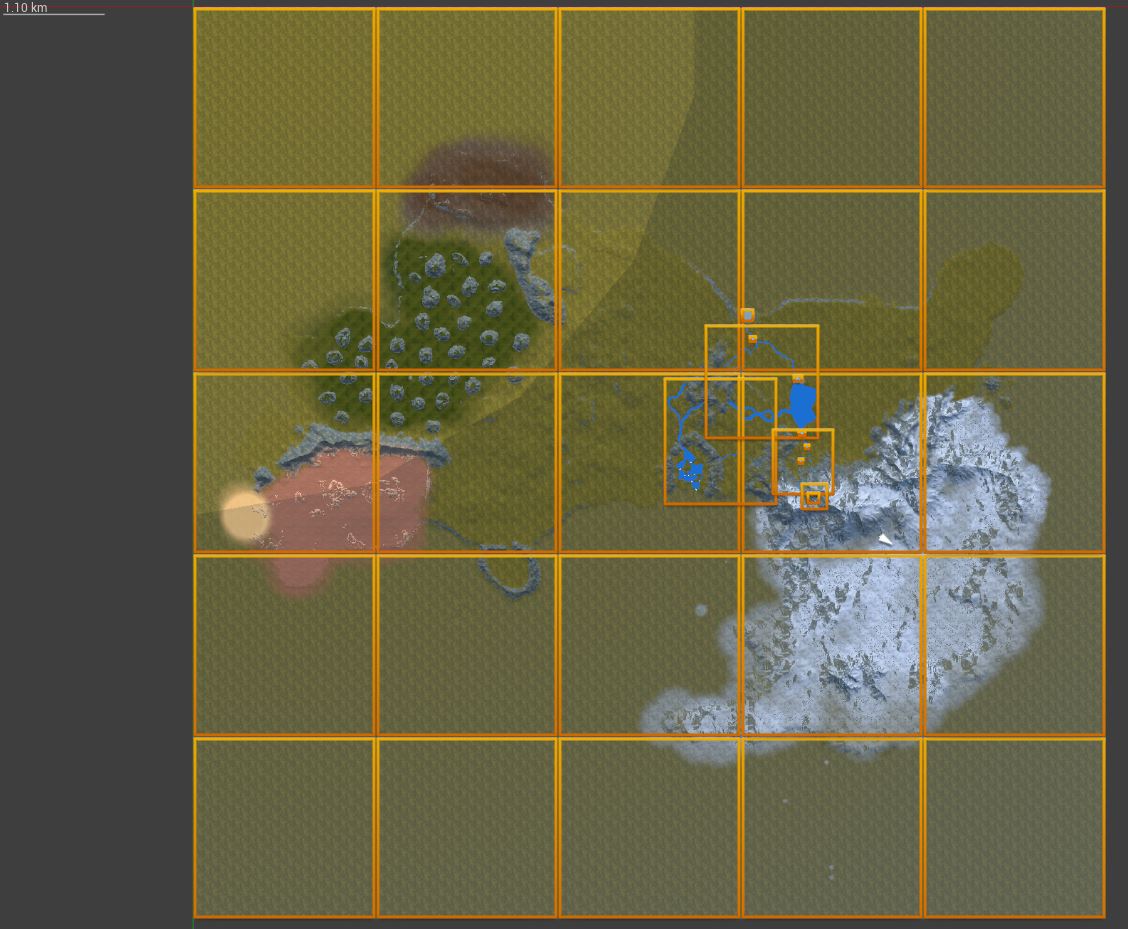
I used tiles landscapes and world composition to manage the terrain, with a total of 25 tiles.
I then started to work on landscape material. For this I started from the brushify basic pack and changed all the textures into some more cartoony and hand painted ones. I also changed many settings to find a good look and changed all grass types to a more low poly stylized style.
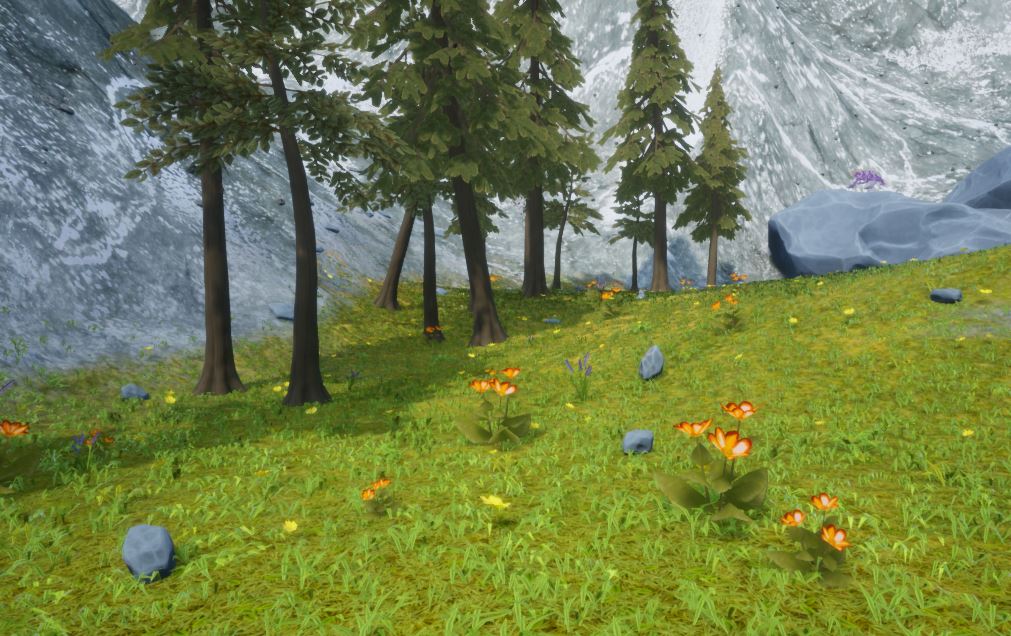
Rivers and Lakes
After that, I worked on rivers and lakes. I only did it to a part of the world for testing purposes. While having a pretty nice look, this water shader soon became extremely heavy on performance when having several rivers on screen and I had to reduce it a lot and add a LOD system.
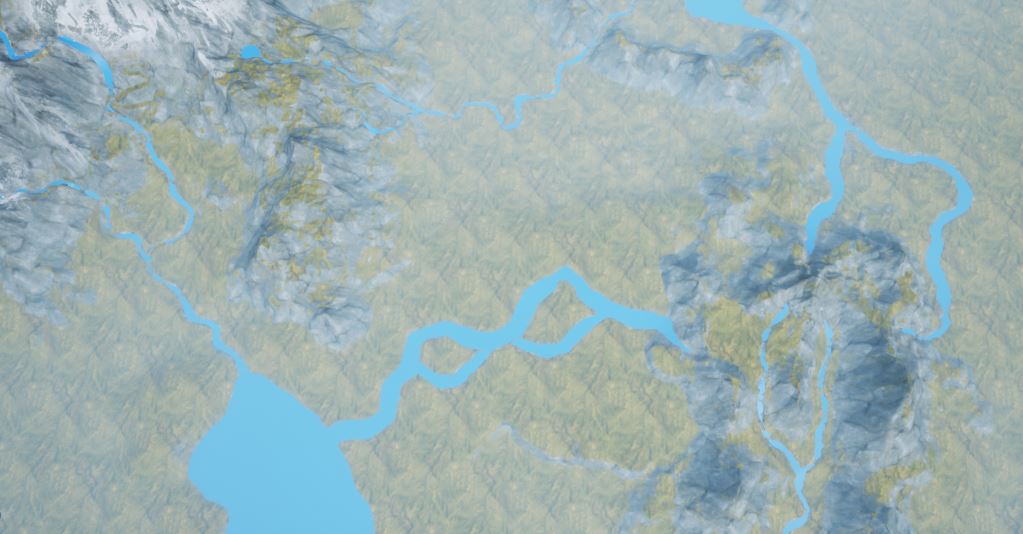
I'm not sure to keep this forever, as I feel I could make a more stylized and optimized water shader according to my game.

Day and Night
I started to implement a day and night cycle. For some time, I thought that it would be too hard to make and that baked lighting was the only way to have an optimized game, but after watching some great Unreal livestreams about lighting in Fortnite and open worlds, I realised it was possible not only to do a day and night cycle easily, but also to use only dynamic lighting if done correctly!
Day Night Cycle from Starisen on Vimeo.
Getting Osawan village back on the map
After all these steps, I eventually started to move the Osawan village map into the open world Orisia level.
The main issue was to remodel the terrain from scratch as I couldn't add another terrain on top of the existing one (and it would have been totally stupid). I also lost all trees and vegetations, but thought it would be an opportunity to build it again, with better mesh, more in the style I'm aiming for.
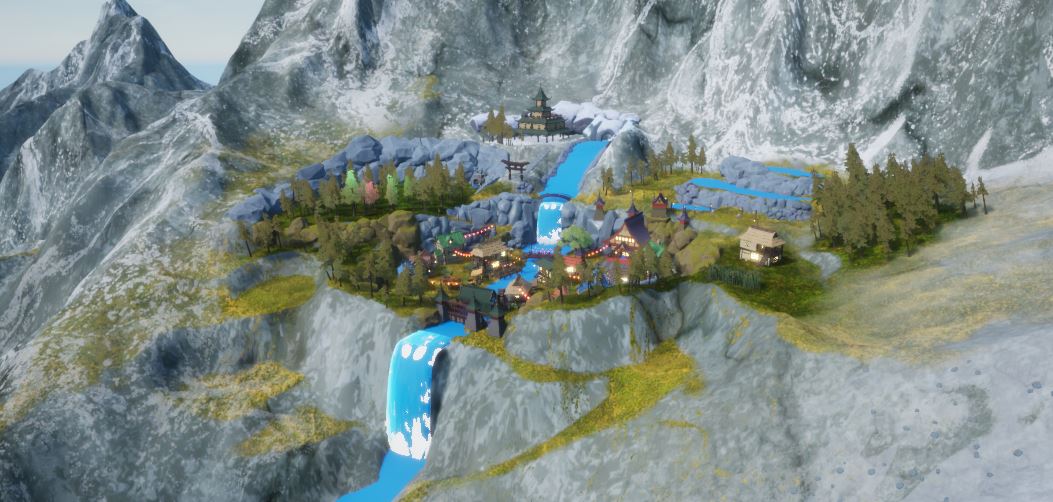
On this image, we see that this is far from finished, and it looks less interesting than the previous village map. I still have to redo all paths, vegetations and would like to rework on quite a few buildings. But this will be for another time, and another devlog!
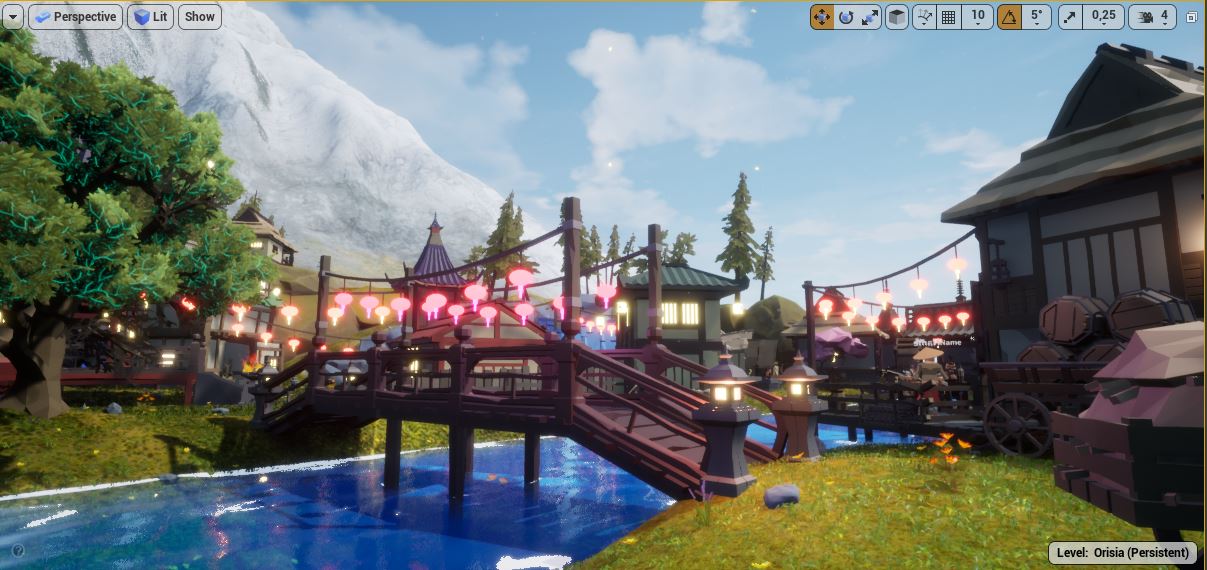
Some more images
I leave you with some more images about today's subject!

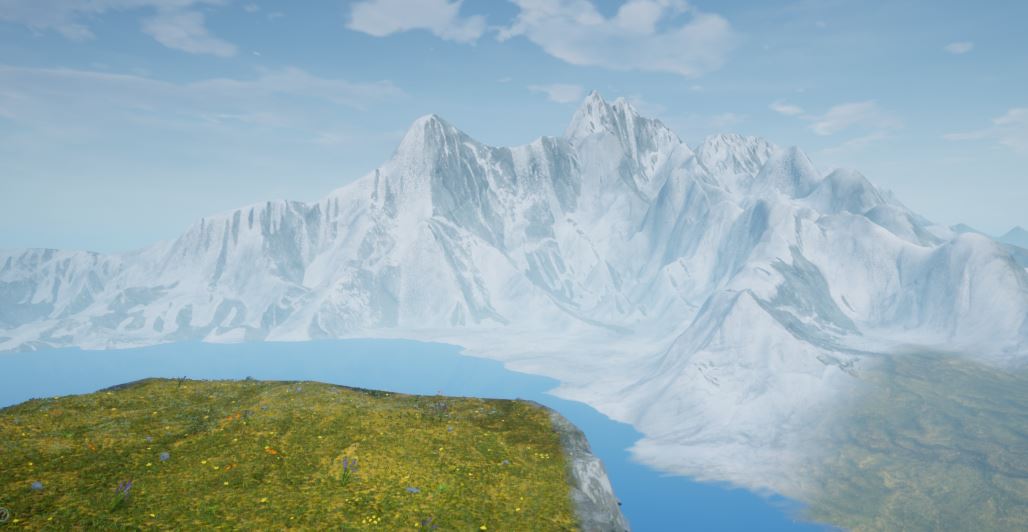

Osgynn
Osgynn is a top down RPG with strategic turn based combat and exploration.
| Status | In development |
| Author | Osgynn |
| Genre | Role Playing, Adventure |
| Tags | 3D, Open World, Singleplayer, Strategy RPG, Top-Down, Top Down Adventure, Turn-Based Combat, Unreal Engine |
More posts
- Some Images of current stateJan 18, 2021
- Devlog 2: Making of a character editor (in ue4 blueprints)May 10, 2020
Leave a comment
Log in with itch.io to leave a comment.